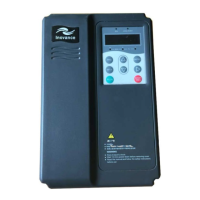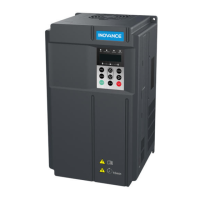return(crc_value);
}
The chapter is about communication contents, it’s used to control the inverter operation, the
status of the inverter and related parameter setup.
Read and write function-code parameters (Some functional code is not changed, only for the
manufacturer use.)
The mark rules of Function code parameters address:
The group number and mark of function code is the parameter address for indicating the rules.
High order bytes
:
F0 to FF
Low order bytes: 00 to FF
For example: F3-12, address indicates to F30C.
Caution:
Group F1: Only for reading parameter, can not be changed parameters
Group FF: Either the parameter can not be read, nor be changed.Some parameters can not be
changed during operation, some parameters regardless of what kind of state the inverter in, the
parameters can not be changed.Change the function code parameters, pay attention to the
scope of the parameters, units, and relative instructions.
Besides, due to EEPROM be frequently stored, it will reduce the lifetime of EEPROM.In the
communication mode, and some function code needn’t be stored as long as change the RAM
value. To achieve this function, change high order F of the function code into zero.
Corresponding function code addresses are indicated below:
High byte: 00~0F
Low byte: 00~FF
For example: Function code F3-12 can not be stored into EEPROM, address indicates to be
EEPROM.
This address can only act writing RAM, it can not act reading, when act reading, it is invalid
address.
Group FH function parameters:
Some models with extended function,such as MD330 or the models with water supply
card,which increase group FH parameters,the communication address of group FH parameter
is D0**
(
non-stored
)
E0**
(
stored).
For example: FH-05, it indicates D005H or E005H. FH-20,it indicates D014H or E014H.
Stop/start parameter

